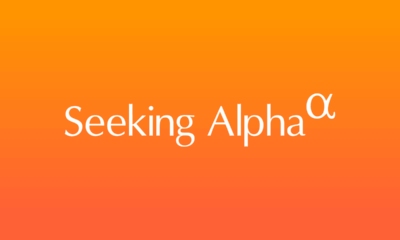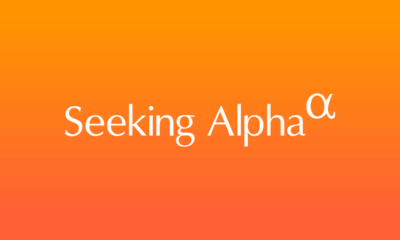Science
Google Achieves Quantum Advantage with Innovative Algorithm

Google has unveiled a significant advancement in quantum computing by demonstrating a quantum advantage through a novel algorithm known as “quantum echoes.” This approach allows quantum systems to perform computations that are not only faster than traditional supercomputers but also useful in real-world applications. This breakthrough was presented in a paper published in Nature in 2025, marking a pivotal moment in the ongoing competition between quantum and classical computing.
Understanding Quantum Echoes
The concept of quantum echoes involves a sophisticated series of operations on the qubits, the fundamental units of quantum information. Each qubit exists in a superposition, meaning it can represent multiple states simultaneously until measured. In this latest work, Google’s researchers manipulate these qubits using gates, which are the operations that enable computation. Unlike traditional methods that typically alter one or two qubits at a time, the quantum echoes technique employs a mix of two-qubit gates followed by single-qubit gates with randomized parameters.
This innovative process essentially creates a scenario where the quantum system does not revert to its original state after the operations are completed. Instead, it generates an “echo” of the system’s state, allowing researchers to analyze how quantum interference influences outcomes. As Tim O’Brien, a key researcher at Google, explained, “You evolve the system forward in time, then you apply a small butterfly perturbation, and then you evolve the system backward in time.” This unique method showcases the intricacies of quantum mechanics, where multiple probabilistic paths can interfere with one another.
Potential Applications in Nuclear Magnetic Resonance
The implications of this breakthrough extend into practical applications, particularly within the field of Nuclear Magnetic Resonance (NMR). NMR technology exploits the quantum property of spin in atomic nuclei, allowing researchers to gather structural information about molecules. However, as molecules increase in size, modeling their interactions accurately has become increasingly challenging.
In collaboration with NMR experts, Google demonstrated how quantum echoes could be utilized to improve understanding of molecular structures. By using a specific isotope of carbon—carbon-13—the researchers were able to synthesize a molecule that acted as a medium for the quantum echo. This experiment, dubbed TARDIS (Time-Accurate Reversal of Dipolar InteractionS), allows for the exploration of quantum behavior within a complex spin network, potentially leading to new insights in molecular chemistry.
While the current research primarily focused on simple molecules, the team is optimistic about the broader applications of quantum echoes in extracting structural information from larger, more complex systems. The ability to analyze long-distance interactions within molecules could transform the capabilities of NMR technology, providing deeper insights than previously attainable.
The quantum advantage demonstrated by Google is underscored by the stark contrast in computational efficiency. The researchers estimate that a measurement taking just 2.1 hours on Google’s quantum computer would require approximately 3.2 years on the Frontier Supercomputer. This disparity highlights the significant potential of quantum computing in tackling problems that are currently beyond the reach of classical methods.
Despite the promising results, the team acknowledges that the current quantum hardware still has limitations. The fidelity of the qubits needs to improve significantly—by a factor of three to four—to model more complex molecular interactions that classical systems cannot handle. Additionally, verifying the outcomes of quantum algorithms remains a challenge, as current quantum processors do not yet match the requirements for independent verification.
In conclusion, Google’s latest advancements in quantum computing not only illustrate a leap in technological capabilities but also open the door to practical applications that may reshape various scientific fields. As the quantum computing landscape evolves, the collaboration of researchers and institutions will be crucial in navigating the complexities of this emerging technology.
-

 World3 months ago
World3 months agoScientists Unearth Ancient Antarctic Ice to Unlock Climate Secrets
-

 Entertainment3 months ago
Entertainment3 months agoTrump and McCormick to Announce $70 Billion Energy Investments
-

 Lifestyle3 months ago
Lifestyle3 months agoTransLink Launches Food Truck Program to Boost Revenue in Vancouver
-

 Science3 months ago
Science3 months agoFour Astronauts Return to Earth After International Space Station Mission
-

 Technology2 months ago
Technology2 months agoApple Notes Enhances Functionality with Markdown Support in macOS 26
-

 Top Stories2 weeks ago
Top Stories2 weeks agoUrgent Update: Fatal Crash on Highway 99 Claims Life of Pitt Meadows Man
-

 Sports3 months ago
Sports3 months agoSearch Underway for Missing Hunter Amid Hokkaido Bear Emergency
-

 Politics3 months ago
Politics3 months agoUkrainian Tennis Star Elina Svitolina Faces Death Threats Online
-

 Technology3 months ago
Technology3 months agoFrosthaven Launches Early Access on July 31, 2025
-

 Politics3 months ago
Politics3 months agoCarney Engages First Nations Leaders at Development Law Summit
-

 Entertainment3 months ago
Entertainment3 months agoCalgary Theatre Troupe Revives Magic at Winnipeg Fringe Festival
-

 Politics2 weeks ago
Politics2 weeks agoShutdown Reflects Democratic Struggles Amid Economic Concerns




















